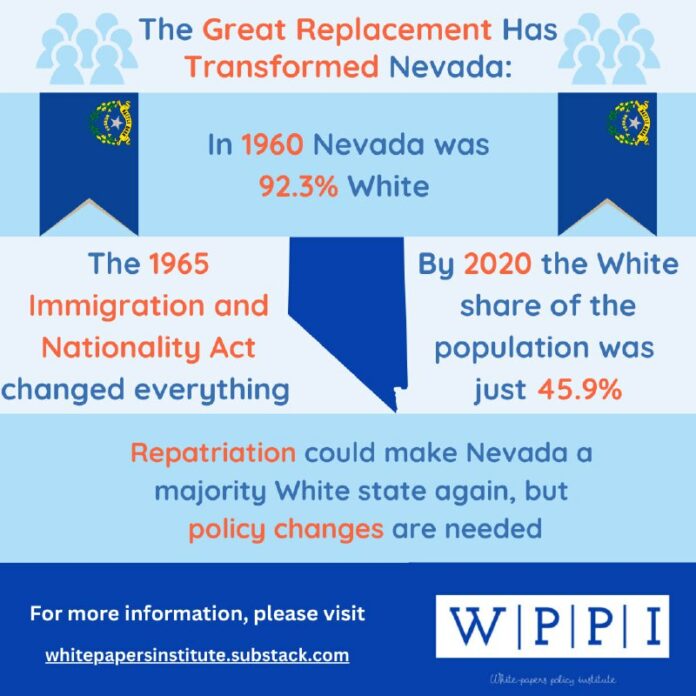In the 1960s, Nevada was a predominantly White state with a growing population and a thriving economy. Industries such as ranching, mining, gambling, science, and tourism were propelling the state to prosperity at an unprecedented rate. However, over the years, Nevada has undergone significant demographic changes that have had a profound impact on its economy and society.
Today, Nevada is only 45.9% White, marking a dramatic shift from its demographic makeup in the 1960s. This change in population composition has coincided with a period of stagnation for the state. Nevada currently has the second-highest unemployment rate in the country, trailing only California. Additionally, the real median household income in Nevada has remained stagnant since 2000, further highlighting the economic challenges facing the state.
The decrease in the White population in Nevada has been cited as a contributing factor to the state’s economic struggles. Some argue that the diversity brought about by the changing demographics has derailed Nevada’s once-booming economy. These changes have prompted discussions about the implications of shifting demographics on the state’s future trajectory.
For those interested in learning more about the demographic changes happening in America, there is a Substack dedicated to providing informative whitepapers and infographics on the topic. Additionally, the Substack can be found on Telegram for further updates and information. For those looking to stay connected on social media, there are links to follow the Substack on Twitter and Instagram.
In conclusion, the demographic changes in Nevada have had a significant impact on the state’s economy and society. As the state continues to navigate these changes, it will be interesting to see how Nevada evolves in the coming years.

